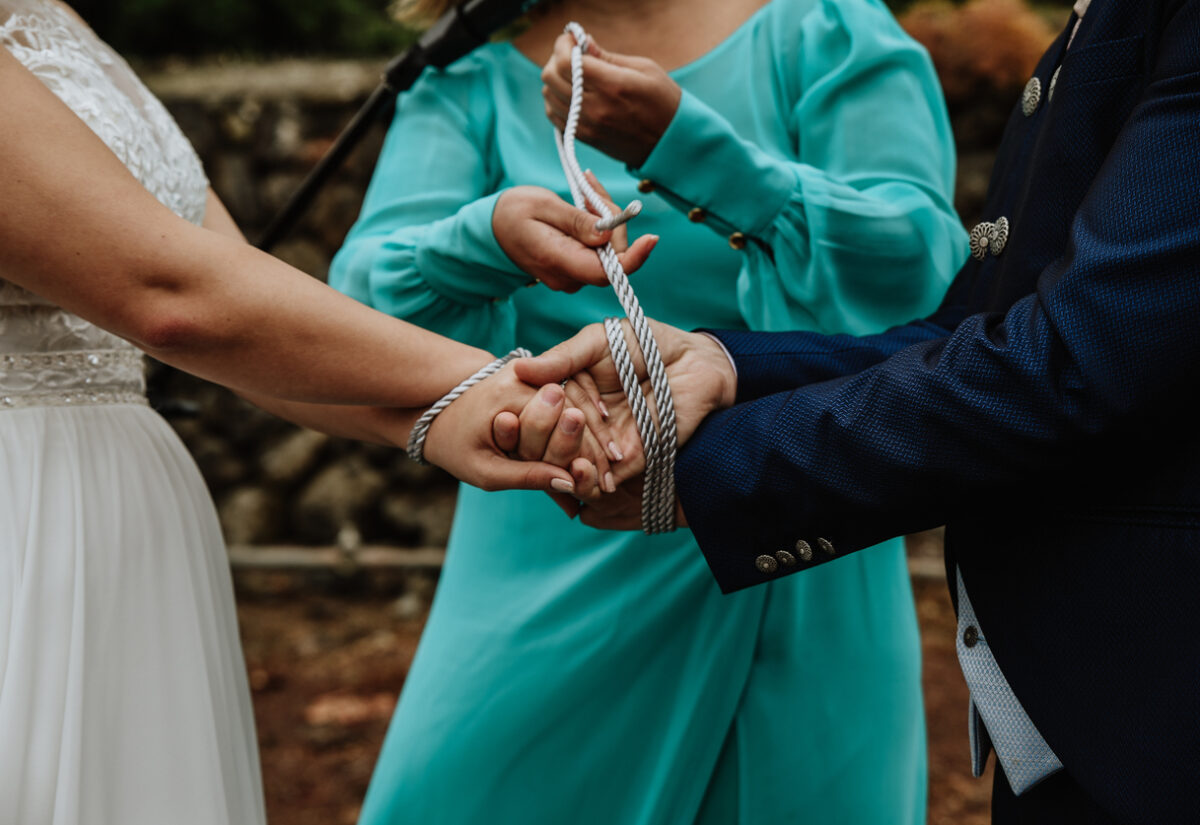 Getty Images
Getty ImagesBritain has a long, layered history, with traditions stretching back thousands of years. While many ancient customs have faded or been repackaged for tourists, some have quietly endured. They might not always look the same as they did centuries ago, but in corners of the countryside, village halls, woodland clearings, and community gatherings, certain ancient practices are still ticking along. Sometimes in secret, sometimes disguised as something more modern, these old ways haven’t disappeared—they’ve just adapted. Here are some ancient British traditions still quietly carried out today, some hidden in plain sight.
Morris dancing in disguise
Morris dancing is often dismissed as a quaint folk performance performed at village fetes and beer festivals, but it’s actually a survival of much older ritual dances. With roots possibly going back to pre-Christian fertility rites or seasonal celebrations, Morris dancing has evolved but still retains core elements of its ancient symbolism—bells to ward off evil spirits, sticks and swords to represent combat and renewal, and rhythmic footwork that echoes older agricultural and ceremonial patterns.
While the modern version is familiar to anyone who’s been to a summer fair, some groups practise older, more private forms, especially during seasonal changes like solstices and equinoxes. These dances are less about entertainment and more about continuity. Midnight gatherings, unadvertised appearances, and processions known only to locals still happen across Britain. Though it’s often seen as light-hearted, Morris dancing has deeper roots than most realise.
Well dressing in Derbyshire
This colourful tradition of decorating wells with flowers, petals, leaves, and clay images is most famously practised in Derbyshire villages. It likely has pre-Christian origins, originally honouring water deities or spirits and giving thanks for fresh, clean water—a precious resource in earlier times. As Christianity took hold, the custom was absorbed into church life and became a way of blessing water sources associated with local saints.
Today, dozens of towns and villages across the Peak District still keep the custom alive, carefully arranging intricate floral displays over springs and fountains. Though now seen as part of local heritage, the act of creating these natural altarpieces is a continuation of something far older. It remains a rare example of a pagan nature rite surviving through adaptation and community pride.
Beltane fire festivals
Beltane marked the beginning of summer in the old Celtic calendar, celebrated with huge fires meant to protect livestock, bless crops, and honour fertility. Bonfires were traditionally lit on hillsides, and herds were driven between them to purify them. People leapt over flames, shared food, and performed symbolic acts of union—both literal and ritual.
Though Christianity all but stamped out these fire festivals, they’ve made a quiet return. Edinburgh’s Beltane Fire Festival is the best-known modern celebration, but smaller private Beltane circles have cropped up across rural Britain. These modern iterations often blend Celtic ritual with new-age elements, but the core elements—fire, fertility, and seasonal celebration—remain rooted in the old ways.
Mumming plays
Mumming is a form of folk theatre performed in disguise, often during winter festivals like Christmas or Plough Monday. The actors, or ‘mummers,’ perform short, rhyming plays about death and resurrection. Characters typically include a hero, a villain, a doctor, and a fool, all dressed in eccentric costumes or masks.
Many scholars believe these dramas descend from pagan rituals about the cycle of the seasons—death in winter, rebirth in spring. While much of the original symbolism is now buried under comedy and local dialect, the plays persist in towns across England. Some troupes still go door to door, performing in pubs or streets. Their continued existence speaks to an unbroken chain of performance stretching back hundreds of years.
Handfasting ceremonies
Handfasting was once a widespread form of marriage in Britain, especially in the Highlands and remote parts of England. It involved the couple’s hands being bound with ribbon or cord to symbolise unity and commitment. Though it lost legal status when the Church formalised marriage rites, it lingered in folk tradition and was still common in rural communities well into the 18th century.
Today, handfasting has been revived—particularly among pagans, Druids, and people seeking non-traditional weddings. It’s often included in modern secular ceremonies as a romantic or symbolic gesture, though many don’t realise its roots stretch far deeper than medieval times. It remains a tactile link to the days when communities shaped marriage customs themselves.
Wassailing apple trees
In January, in parts of the West Country and Herefordshire, locals still gather in orchards to perform an old ritual known as wassailing. The goal? To wake the apple trees from their winter slumber and ensure a bountiful harvest. Participants sing traditional songs, pour cider on the roots, hang toast in the branches, and make loud noises to drive away evil spirits.
Some groups fire shotguns into the air; others bang pots and pans. While it’s become a lively and social event with cider and music, its magical intent remains: to honour nature and ask for its blessing. Wassailing is an agricultural ritual that blends folklore, celebration, and an animistic view of the natural world.
Straw bear parades
Whittlesey’s Straw Bear Festival is a rare survival of an ancient plough custom once widespread in agricultural communities. A person is completely covered in straw and paraded through the streets, visiting homes and businesses in exchange for food, drink, or coins. The character represents a spirit of fertility and abundance for the coming year.
The tradition was suppressed in the early 20th century, possibly due to concerns over paganism or rowdiness. It was revived in the 1980s and continues today with growing popularity. Other parts of the country have variations on this custom, reflecting the ancient connection between people, land, and seasonal cycles.
Sin-eating rituals
Sin-eating was once a funerary custom in parts of Wales, Shropshire, and the borderlands. A ‘sin-eater’ was hired to eat bread and drink ale over the corpse, symbolically absorbing the sins of the dead and easing their passage into the afterlife. The practice was deeply spiritual, but also marginalised—the sin-eater was usually an outcast.
While no one is publicly performing sin-eating today, some customs bear a faint echo of it. In some rural funerals, food is left with the deceased, or bread is broken at gravesides. These quiet gestures hint at a lingering belief that death needs ritual—and that someone must carry the spiritual burden.
Pace egg rolling
This Easter tradition involves rolling decorated eggs down hills, particularly in Lancashire and West Yorkshire. While it’s now often explained in Christian terms—representing the stone rolled from Christ’s tomb—the act itself predates the Church and connects to spring fertility rites.
Rolling eggs down hills is symbolic of the rebirth of the land and the return of light. The events are often accompanied by singing, Morris dancing, or folk theatre, turning the whole thing into a seasonal festival that links Christian and pagan symbolism without needing to explain the blend.
Horn dances of Abbots Bromley
In the village of Abbots Bromley, Staffordshire, one of Britain’s most enigmatic folk rituals still takes place each September. Men in costumes carry reindeer antlers through the village to the sound of pipes and drums, accompanied by a hobby horse, a fool, and dancers. The antlers themselves have been carbon-dated to over 1,000 years old.
Though no one knows the dance’s exact origin, it’s widely believed to have started as a fertility or hunting ritual. Despite now being a local spectacle, its original purpose—honouring the changing seasons or invoking good fortune—remains tucked beneath the surface.
The Burryman of South Queensferry
Every August, a man is entirely covered in sticky burrs and paraded silently through the town of South Queensferry, Scotland. He’s offered whisky at each stop and flanked by attendants. The identity of the Burryman changes each year, but the expectations and symbolism remain intact.
The purpose of the ritual is unclear, though it’s believed to ward off evil, bless the town, or represent a spirit of the land. It’s one of the most physically demanding British folk customs, and one of the most visually arresting. Few traditions better capture the surreal endurance of ancient ritual in the modern age.
Obby Oss festival in Padstow
Each May Day, Padstow in Cornwall hosts the Obby Oss Festival—a spectacular event filled with music, processions, and two strange horse-like figures known as the Osses. Crowds sing the traditional May Song as the Osses parade through the streets, dancing and interacting with onlookers.
The celebration draws tourists, but its origins are deeply rooted in Celtic fertility rituals. The circular dancing, symbolic chases, and seasonal timing suggest a pre-Christian celebration of renewal and regeneration. Despite the modern party atmosphere, it’s a direct descendant of the island’s most ancient rituals.
Dartmoor’s pixie traditions
In Devon’s Dartmoor region, stories of pixies have been told for generations—small, mischievous spirits of the moorland known for leading travellers astray. While most think of pixies as folklore, in some communities, old traditions persist. Paths are marked with offerings like shiny coins or flowers to appease the pixies, and children are warned not to mock them.
Although these customs aren’t part of any major festival, they reflect how belief in the land’s spirits still lingers. In some local fairs, ‘pixie hunts’ are staged, echoing older rituals that tried to keep mischievous forces in check. It’s a rare example of myth being woven into everyday landscape.
Cheese rolling at Cooper’s Hill
While this Gloucestershire tradition is now best known for its chaotic spectacle, the idea of chasing a cheese down a steep hill may have started as a ritual offering. Some historians believe the event has links to ancient fertility rites or solstice celebrations, where round cheeses symbolised the sun.
Though it’s become a wild sporting event, the underlying symbolism—risk, reward, sacrifice, and seasonal celebration—could hint at a much older origin. In that sense, even this raucous contest has a foot in ancient ritual.
These traditions may no longer hold the same meaning they once did, but they still offer a vital link to the distant past. Beneath the surface of British life, nestled between modern routines and yearly festivities, something old continues to flicker—quietly, stubbornly, and full of life. These customs, whether joyful, strange, or downright mysterious, remind us that history isn’t just something behind us. It’s alive in fields, village greens, pub corners, and bonfire nights—just waiting to be noticed.



